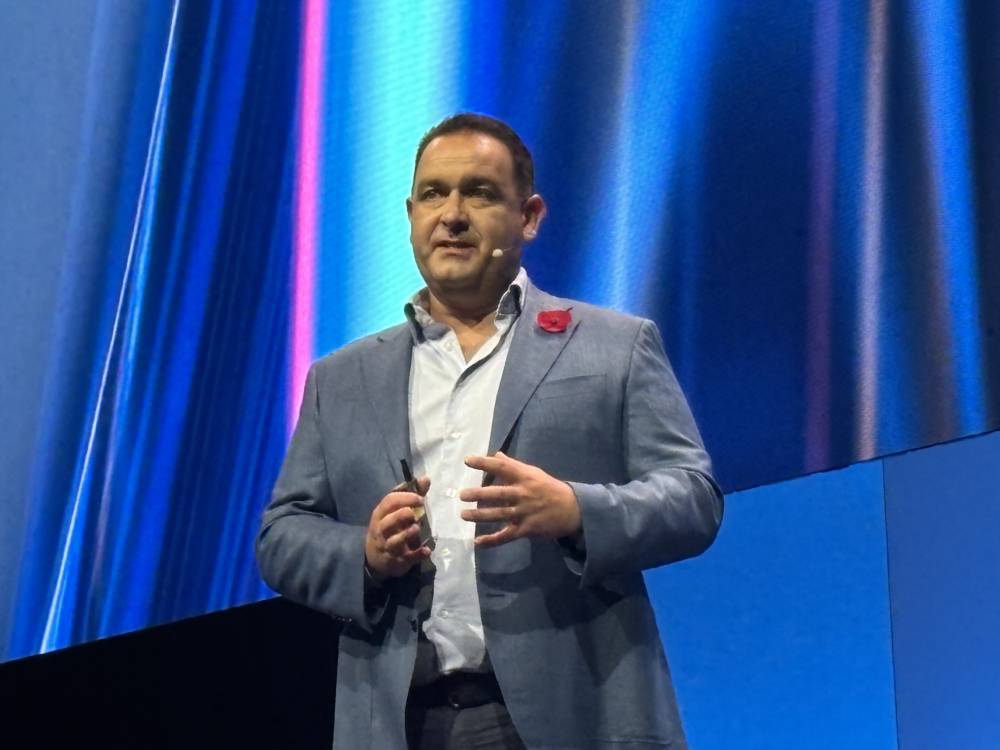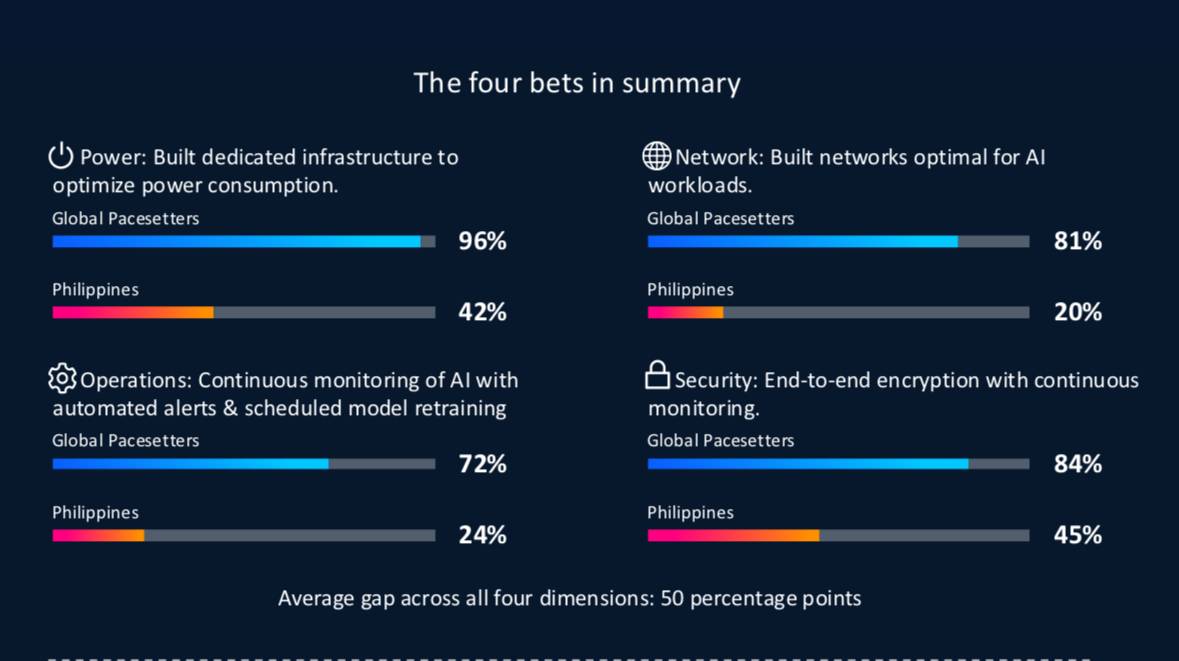59% of PH companies at risk of AI infrastructure deficit

MELBOURNE, Australia—About 59 percent of surveyed companies in the Philippines are at risk of falling into artificial intelligence (AI) “infrastructure debt” trap as they are not making the necessary power, network, staff retraining and security investments.
This is according to the Cisco 2025 AI Readiness Index global study released at the Cisco Live tech conference here.
The research shows that out of the Philippine companies that consider themselves “AI-ready”, only 41 percent are rolling out such technology at the scale and speed needed to make real money out of AI deployment.
The figure is much lower than the 97 percent share of global “pacesetters” that are allocating sufficient capital to unlock values from AI.
Only 13 percent of organizations globally are considered as “pacesetters.”
“These pacesetters are four times more likely to move from pilots to production, and they are 50 percent more likely to actually see measurable—and measurable being the operative word—value from AI,” Simon Miceli, managing director of Cisco’s cloud and AI infrastructure business, says in a press and analysts briefing.
“This year’s report shows AI leaders architect differently—and the pacesetters prove it,” Cisco Philippines managing director Zaza Soriano-Nicart says.
Such pacesetters build network-first foundations, prioritize infrastructure, optimize continuously and embed security from day one, Nicart notes. As a result, 97 percent of them are likely to deliver tangible and scalable value, she adds.
On the other hand, only 41 percent of so-called AI-ready Philippine companies are coping with the buildout requirements.
“The 59 percent of Philippine companies without this level of architectural foresight risk accumulating ‘AI infrastructure debt’—the shortcuts and gaps that compound into bottlenecks that cripple innovation and competitiveness,” Nicart stresses.
The warning signs are emerging across Philippine respondents: organizations are deploying AI agents faster than they can secure them; networks are rated optimal by only 20 percent; and power infrastructure is missing for 58 percent of requirements.
Such technical debt could compound into operational risk, security exposure, compliance challenges and competitive disadvantage, Cisco flags.

Big workflow, little pipeline
Half of the Philippine organizations surveyed expect AI workloads to increase by more than 50 percent within three to five years, with 34 percent building new data center capacity in the next 12 months.
But power infrastructure for this energy-hungry segment takes 18 to 36 months to put up.
While 96 percent of global pacesetters have built dedicated infrastructure to optimize power consumption, 42 percent of the Philippine companies are building AI capacity without the power infrastructure to run it.
Also, 81 percent of global pacesetters prioritize network infrastructure and rate their network as “optimal” for AI workloads. Only 20 percent do so in the Philippines, according to the study.
Global pacesetters focus on continuous optimization after deployment and 72 percent of them have continuous monitoring with automated retraining—versus just 24 percent in the Philippines. This results in a massive gap in speed: 65 percent of global peers can update models in under an hour with minimal downtime versus 43 percent in the Philippines.
Furthermore, pacesetters build security as infrastructure from day one. Globally, 84 percent of them have end-to-end encryption with continuous monitoring versus 45 percent in Philippines.
This approach to security becomes even more critical with AI agents: 90 percent of Philippine organizations are deploying autonomous AI agents, yet only 33 percent can properly secure them. Globally, 96 percent of pacesetters are able to deploy and 75 percent are able to secure.
Winning the AI game
Overall, pacesetters are seen winning the AI game not because they spend more, but because they had made architectural bets early—before workloads demanded them, before bottlenecks emerged and before security became urgent.
“For pacesetters, AI isn’t a side project. They don’t have an AI strategy; they have a business strategy, and they are integrating AI into that business strategy directly. They have clear plans; they have clear governance models; and importantly, they have an investment profile that matches the ambition,” says Ben Dawson, president of Cisco Asia Pacific, Japan and Greater China.
Globally, 79 percent of the pacesetters category feel they have an adequate budget to invest in AI the way they need to support the business.
“They also recognize that security is not a bolt on security but as a core part of the value proposition,” Dawson says in a keynote speech during the conference.
“To truly take advantage of AI, it’s about unlocking not just the power of AI, but it’s unlocking the power of the data we possess, and that data is really valuable to us. It has an opportunity to deliver real value and new opportunities, but it’s also valuable to others. Thinking about the governance, thinking about the policy, thinking about how you utilize your data and do it in a way that’s safe and secure, unlock the value, but not unlock your IP (internet protocol),” Dawson says.
“Pacers are also thinking about the infrastructure they need. They’re not focused on optimizing the infrastructure for the needs of today. They’re thinking about how they build for the needs of tomorrow,” he underscores.
Now in its third year, the Cisco AI Readiness Index 2025 global study is based on a double-blind survey of 8,000 senior IT and business leaders responsible for AI strategy at organizations with over 500 employees across 30 markets and 26 industries.





















